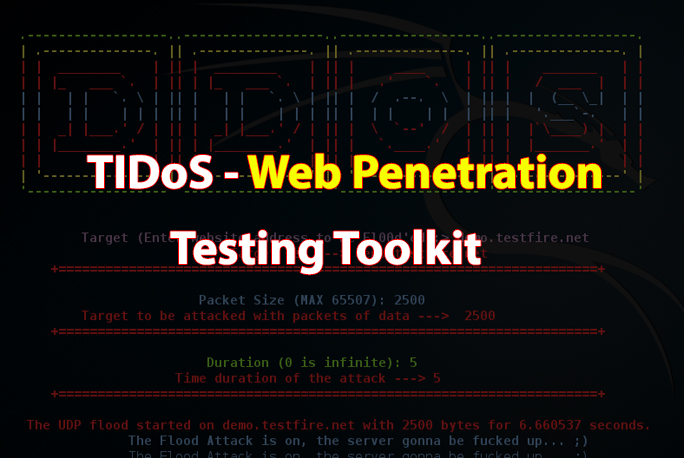TIDoS Framework that was totally developed under python programming which can perform a comprehensive audit of the web applications. This toolkit has totally packed with the number with a specific objective that has reconnaissance, open-source intelligence, enumeration + scanning, and the most important thing vulnerabilities analysis.
TIDoS Framework can perform both the types of reconnaissance which in the form of active and passive reconnaissance. The passive reconnaissance in which the toolkit can perform different lookups like the reverse IP, DNS configuration, sub-domains, GeoIP, and Whois lookup.
The tools which gather have useful information about the target from the available social media profiles. The videos framework can do ping enumeration, cms detection, and discovering interesting files via brute-forcing.
The toolkits have performed the security analysis of the web application for the different vulnerabilities like the SQL injection, LDAP injections, HTML injections, XPATH injections, CRLF injections, Cross-Site Scripting, Subdomain takeovers, and PHP injections.
The TIDoS framework can brute force the credentials of the plaintext protocols like FTP, TELNET, SMTP, XMPP, and SQL protocol.
TIDoS Framework Installation
 https://github.com/theinfecteddrake/tidos-framework.git
https://github.com/theinfecteddrake/tidos-framework.git
The dependencies can be also installed by the command
cd tidos-frameworkchmod +x install./install
TIDoS WORK
When the installation is successful then the framework can be set into action by simply typing its name in the terminal.
tidos
After the loading of the tool, you can simply type the web URL terminal. The TIDoS framework confirms the website address and provides the available option to start the scanning or auditing of the target website.
You see each option loaded with a number of modules that can perform special tasks. The available “Reconnaissance & OSINIT” Option has 48 modules which can perform the active reconnaissance, passive reconnaissance, and the information disclosure tasks.
Every option is loaded with the module part. If you called about the scanning and Enumeration which can contain 15 modules that can perform port scanning and tasks like web applications Firewall analysis. As similar, every port has its option and modules.
When you select the available options, load all the associated modules to further refine the scanning objective. If you select the “Reconnaissance & OSINT” that option contains different modules you can see in the picture.


